
Mexico is a land where people LOVE to eat. Everywhere you go, people are selling food: cut up fruit, barbecued chicken, fried potatoes, roasted corn on the cob, tacos, etc. There are lots of places to shop for food: supermarkets, roadside stands, outdoor markets, even directly from farmers. Finding food is not a problem, and usually at good prices. I'll discuss eating in this post and the next: eating in and eating out.
Perhaps one of the things I was most looking forward to in Mexico was the availability of fresh fruits and vegetables. The picture above was taken at the weekly tianguis, or outdoor market, in Ajijic. Vendors sell all kinds of food at the market, and it is the best place to buy fresh fruits and vegetables. We have our favorite vendor, Aaron, who takes good care of us. The fruits that we most enjoy here are pineapples, mangoes, bananas and plantains, cantaloupe, watermelon, jicama, oranges, limes, grapefruit, strawberries, raspberries, papaya, and apples. In terms of vegetables, we like to buy tomatoes, onions, broccoli, cauliflower, green beans, squash (summer and winter), and peas. I have not seen much asparagus here. Then there are some of the uniquely Mexican fruits and vegetables: the chaiote (a sort of pear-shaped greed squash), nopal (a cactus good cooked or raw, supposedly good for one's cholesterol, prickly pear (a sweet, white cactus fruit), guyavas (guava fruit), and many other strange, but often tasty fruits I don't know the names of. Some things here are disappointing here, like tomatoes. The juicy Maine tomatoes are nothing like the mostly plum tomatoes available here. Limes are wonderful, and Mexicans put them on everything. Lemons, however, are rarely, if ever, available. Limas, which look like limes, are neither sweet not sour; I don't know why they sell them. Here are some approximate prices at the market (in USD, kilo= 2.2 lbs):
tomatoes $1/ kilo
cucumbers $.50/ kilo
grapes $5.00 kilo (imported)
papaya $1.50/ kilo
limes $.80/ kilo
bananas $.80/ kilo
onions $.50/kilo
strawberries $1.00/kilo
raspberries (bought at the farm) $3.00/ gallon bucket
Mexicans are also very fond of their meat. Like the Native Americans, they believe in using all parts of the animal. When you walk down some back streets, you see large tubs of animal parts boiling in lard. The resulting "carnitas" smell delicious, but are difficult to identify. The Mexicans love them, but I don't partake. Meat is sold at carnicerias, or butcher shops. It's not unusual to see the butcher cutting up a carcass in the back of a pick-up truck before he brings it into the shop and displays the meat in refrigerated cases. The Mexicans are fond of roasting very thin strips of beef over a charcoal fire (carne asada). They eat lots of chicken (pollo) and it seems to be available everywhere, roasted and BBQed. Pork is very different here and really tasty. I was not a big pork fan in Maine, but here it's tender and very flavorful. They have many types of sausage, or chorizo, here, from bland to very spicy. Goat meat is popular, as is lamb. Meat is easily available and Pixie and I usually spend about $3.00 for enough for a meal.
Fish is also very popular here, and many Mexicans eat fish from Lake Chapala. The lake is cleaner than it was, but most gringos don't eat lake fish. But the fish shops (pescaderias) get fresh fish from the Pacific every day, and many types are available. Of course, I haven't seen cod, haddock, hake, or mackeral. The most popular fish here are red snapper, sea bass, and mahi-mahi. I am partial to snapper, which cost us about $4 for a meal. Shrimp are great here and huge. They cost about $8/ kilo, depending on the size. I have not seen mussels or clams.
One staple of the Mexican diet is corn tortillas. They are available everywhere, warm and fresh. I usually buy a 2" stack for about 5 pesos, or 50 cents. Mexicans eat them like bread. You can put anything in them, roll them up and eat. With beans they provide almost perfect protein. I like the beans, but I have discovered that it's easier to buy them in containers, already cooked, for 8 pesos, than to soak and cook them yourself. The also love bread, and it is readily available in bakeries for about 5 pesos for a small loaf.
They love to drink Coka Cola, Squirt, and many fruit-flavored sodas. Mexico is apparently the greatest per-capita consumer of soda in the world. They call it "refresco." For alcohol, they mostly consume beer (cerveza) and tequila. Mexicans don't drink margaritas as much. They just add tequila to their squirt or fresca, or sip it like whiskey. They do make a drink called a micholada, which consists of beer, clamato juice, lime, salsa and salt. It's really not bad.
Mexicans are great snackers. They love potato chips, which come in a cellophane bag, without salt. The bag comes with a packet of chili hot sauce which they pour over the chips. Most stores have huge racks of cheap snacks and cookies, like in the US. Yogurt is very popular here, and homemade yogurt can be found everywhere. My favorite is celery pineapple. Fresh honey and soft cheeses are also popular. Many foods, like raisins, granola, nuts and dried chiles can be bought in bulk.
We find that food shopping is cheap here as long as you buy Mexican products. They do have stores that import US products, but you pay dearly for them, so we only buy US food, rarely, usually when we need an item for a recipe. So far we have done a good job stretching our pension check, so we haven't had to resort to eating beans on tortillas for the last week of the month, but we could if we had to.
It is interesting to note that I have gained about ten pounds since arriving here in May. Many of the Mexican foods are fattening, so I am trying to concentrate on the abundance of fruits and vegetables.
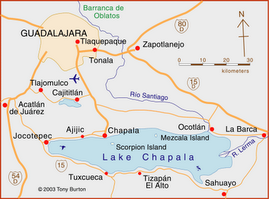




















































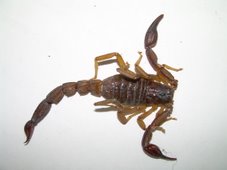








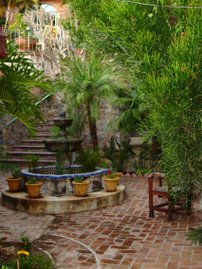
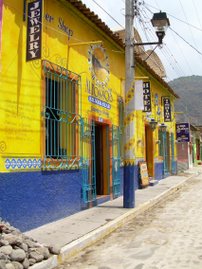
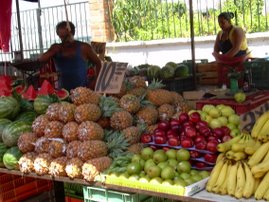


1 comment:
off white outlet
kd shoes
hermes birkin bag
goyard
off white jordan
paul george shoes
Post a Comment